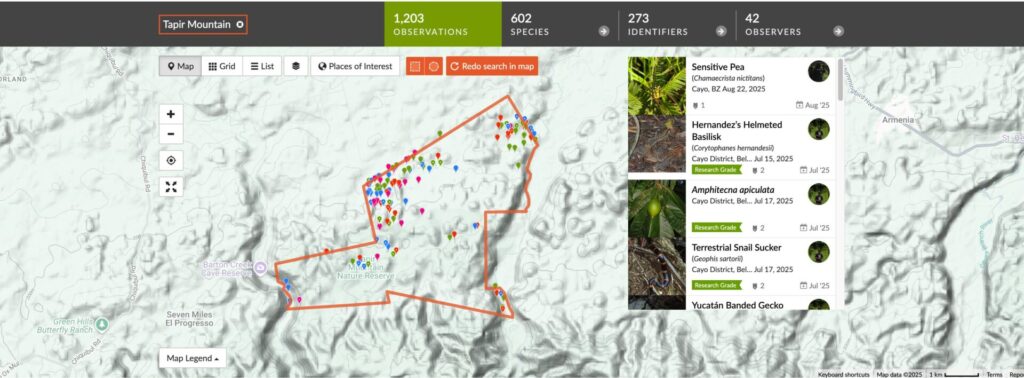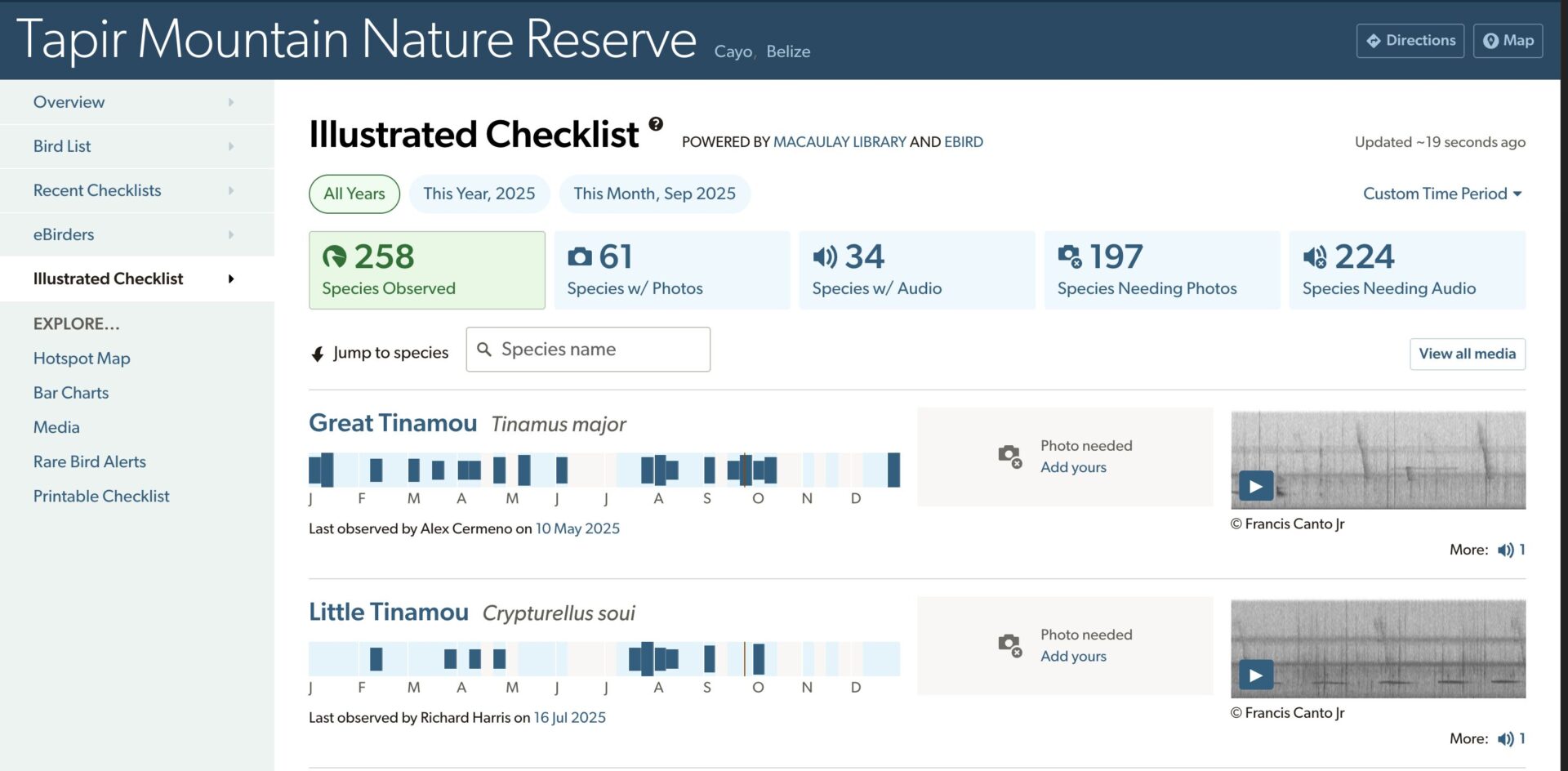
Tapir Mountain Nature Reserve
Biodiversity
Environment
Under the UNESCO classification system, six natural terrestrial ecosystems have been identified to date within Tapir Mountain Nature Reserve.
The predominant vegetation is broadly defined as tropical evergreen seasonal broad-leaved lowland forest, which is found on limestone soils. Within this broad classification, three ecosystems have been identified:
- Tropical evergreen seasonal broadleaf lowland forest over steep karstic hills, found on steeper slopes.
- Tropical evergreen seasonal broadleaf lowland forest over rolling karstic hills, found in the valleys between these hills.
- Tropical evergreen seasonal broadleaf lowland forest on calcareous soils, found in flatter areas.
A fourth ecosystem overlying the more nutrient-poor, metasedimentary rocks in the south of the protected area is characterized by well drained tropical evergreen seasonal broad-leaved lowland forest.
In addition to these, deciduous broad-leaved lowland disturbed shrubland is found in small patches along the edges of the protected area where fires have escaped adjacent farmlands and degraded the forest edge.
An aquatic ecosystem associated with Barton Creek and Roaring Creek—which delineate part of the protected area boundaries—has also been identified.
Tapir Mountain Flora

Past surveys suggest that Tapir Mountain is relatively species-rich, with over 205 species of plants—a mere fraction of the projected total. At least four species are considered globally threatened, including three commercial species: Big-leaf Mahogany (Swietenia macrophylla), Xate (Chamaedorea oblongata) and Cedar (Vitex gaumeri).
Tapir Mountain Fauna
Bird Species Recorded
Mammal Species Recorded
Reptile Species Recorded
Fish Species Recorded
Amphibian Species Recorded
Insects Species Recorded
iNaturalist Observations

Belize Karst Habitat Conservation makes use of iNaturalist’s social network to record our observations of plants and animals.
eBird Observations
We use eBird data document bird distribution, abundance, habitat use, and trends through checklist data collected by our research team.

Camera Trap Pilot Program
A total of 20 mammal species were recorded, including many conservation targets such as Baird’s Tapir, Jaguar, Puma, Margay, Lowland Paca, Central American Agouti, Collared Peccary, White-tailed Deer, and Red Brocket Deer. Additionally, 24 bird species were observed, including conservation targets like the Great Curassow, Plain Chachalaca, Short-tailed Hawk, Great Black Hawk, and Mottled Owl.
Conservation targets are species that were selected as representing the biodiversity of Tapir Mountain Nature Reserve– such that strategic actions, taken to ensure their continued viability and reduce the pressures impacting them, will adequately address the needs of the system as a whole.
The camera trap survey recorded 865 independent observations over 1067 trap days, documenting 47 individual species.



